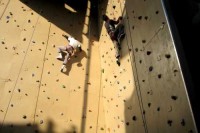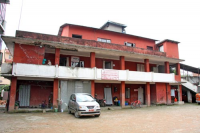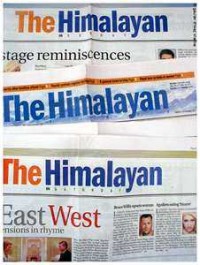Party politics in Nepali Media
The two inseparable parts of today’s democracy, Multiparty politics and press freedom, contribute together to strengthen democratic values and practices. The relationship between the political parties and the media or the press itself is quite complex and interesting.
We all know what a political party is or a press freedom means. Press freedom is the state where not even the political parties could put a barrier or restriction over the press. However, in reality we find that the practice is quite different than what we learn in principles. In Nepal as well, the political parties are seen to be involving in trying to control the media and manipulate the media messages.
There are many journalistic organizations that are well known for their political identity like Nepal Press Union, which is supported by Nepali Congress, Press Chautari Nepal backed by CPN-UML and Revolutionary Journalists Association (Krantikari Patrakar Sangh) backed by UCPN Maoists. Although these organizations does not claim to be the sister organizations of the respective political parties, their affiliation can be understood by the programs and activities they perform. These organizations usually conduct press meets when the leaders from the respective party are on visits to certain districts, hence, providing a platform for the leaders to interact with the journalists.
However, there are also some media that are considered as the authentic mouthpieces of the political parties in Nepal. Most commonly, the weekly tabloids are considered as the mouthpieces and although they claim to be objective, they have specific target group with specific political ideologies. Some of the examples of such papers are Chhalphal, Dristi and Budhabar which are close to CPN-UML although the party has its own authentic mouthpiece which is Navayug. Similarly, Tarun and Sanghu are biased towards Nepali Congress. Also the different fraction within the party have different media they control and not only big but the small parties as well have newspapers to spread their agenda.
Although the Federation of Nepalese Journalists (FNJ), the umbrella organization of Nepalese journalists, is free from political biasness, its members are elected from the political panels. However, the FNJ does not formally acknowledge the political affiliation of its candidates.
In Press Council (the governing body of media freedom and responsibilities) as well, the executive members of the board including the chairperson are appointed politically. Article 4 (1) of Press Council Act, 1992 states that “the council shall be an autonomous and corporate body having perpetual succession”. However, the sixth article of the same act has the provision of political appointment under which the government is free to appoint people from the sector of law or journalism as it wishes. And, the government appointing only those who support the governing party as the chairperson and members has been a tradition in Nepal.
Also, the Government of Nepal owns and runs many media houses like Gorkhapatra Sansthan, RadioNepal and Nepal Television along with the only news agency in Nepal Rastriya Samachar Samiti (RSS). The executive officers and other members operating these houses are also appointed directly by the Ministry of Information and Communications.
The party politics in media hampers the two basic components of media ethics that are, objectivity and balance. The politically aligned media could never give unbiased and objective news. Both the sectors are hampered whenever journalists do politics or politicians do journalism as political biasness results in decreased accuracy, balance, creativity and objectivity of the news and reports. The political biasness or alignment is seen more on weekly tabloids than in national dailies.
Journalists, as any other human, are allowed to have their own political ideologies and beliefs, however, they are not allowed to do politics and journalism at the same time. Although involvement of party politics in journalism or vice versa might have some good parts, it is never acceptable as it endangers objectivity, neutrality and credibility of the journalists which are considered as the most basic principles a journalist should have.







